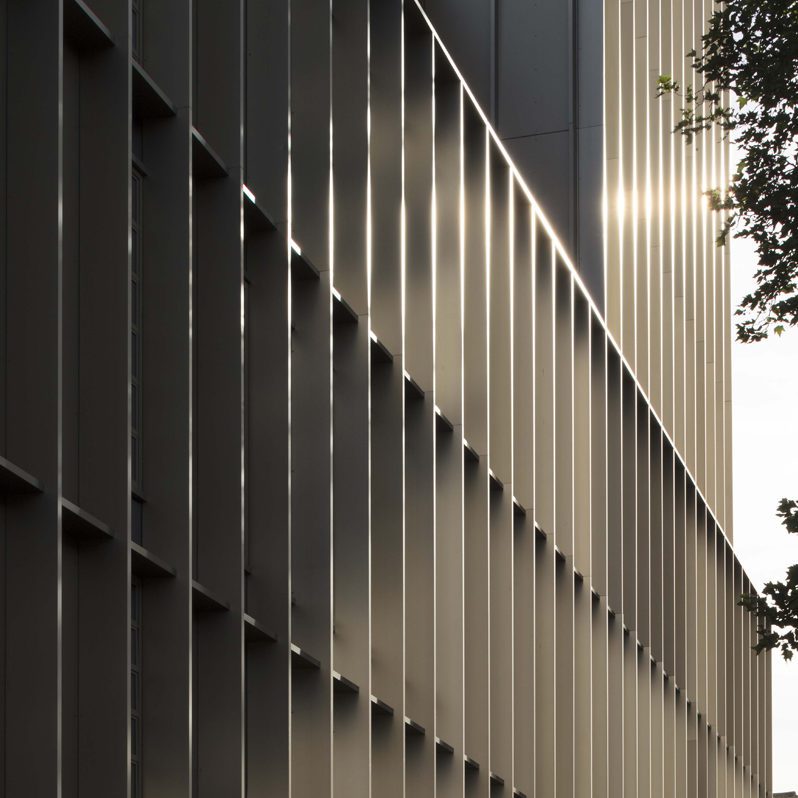Schueco Awards 2018 Cultural Building Commendation: Garden Museum, London, by Dow Jones
Architect: Dow Jones
Main contractor: Rooff
Specialist contractor: Openwood Facades
Client: Garden Museum
Schueco systems/products: FW 50+, AWS/ADS 65, ASS 70.HI
The Garden Museum is housed in the listed deconsecrated church of St Mary at Lambeth. In 2008 architect Dow Jones built a two-storey removeable cross-laminated timber structure within the church, with galleries, an education room and storage, and consolidated the nave as an events space. In 2013 Dow Jones won the competition to design a second phase that would extend the museum both within the existing building and out into the churchyard, providing the opportunity for the museum to create a new public face. The new building establishes an urban presence with a prominent cluster of bronze-clad, timber-frame pavilions, which provide a large and a small education room for a range of learning and community activities, and a cafe. The bronze-clad pavilions are connected by a glazed cloister structure that frames a new garden, with planting by Dan Pearson. In front of the pavilions is a new forecourt that frames the existing porch and entrance to the museum, and has a planting scheme by Christopher Bradley-Hole. The extension of the CLT structure inside the church provides more gallery space and an archive study room and store. The extension continues into the North Yard – a gap between the church building and the Garden Wall of Lambeth Palace – to create new staff offices and workshops, and other back-of-house facilities.
Developing the museum site has brought many challenges; the church yard is a significant archeological site with several listed tombs, nine class-A trees and protected views across the site to Lambeth Palace, all of which conspired to limit the developable envelope. The relationship between the precision of the new architecture and the patina of the old building, combined with the colour and texture of the landscape planting, creates a juxtaposition that defines the character of the museum.














